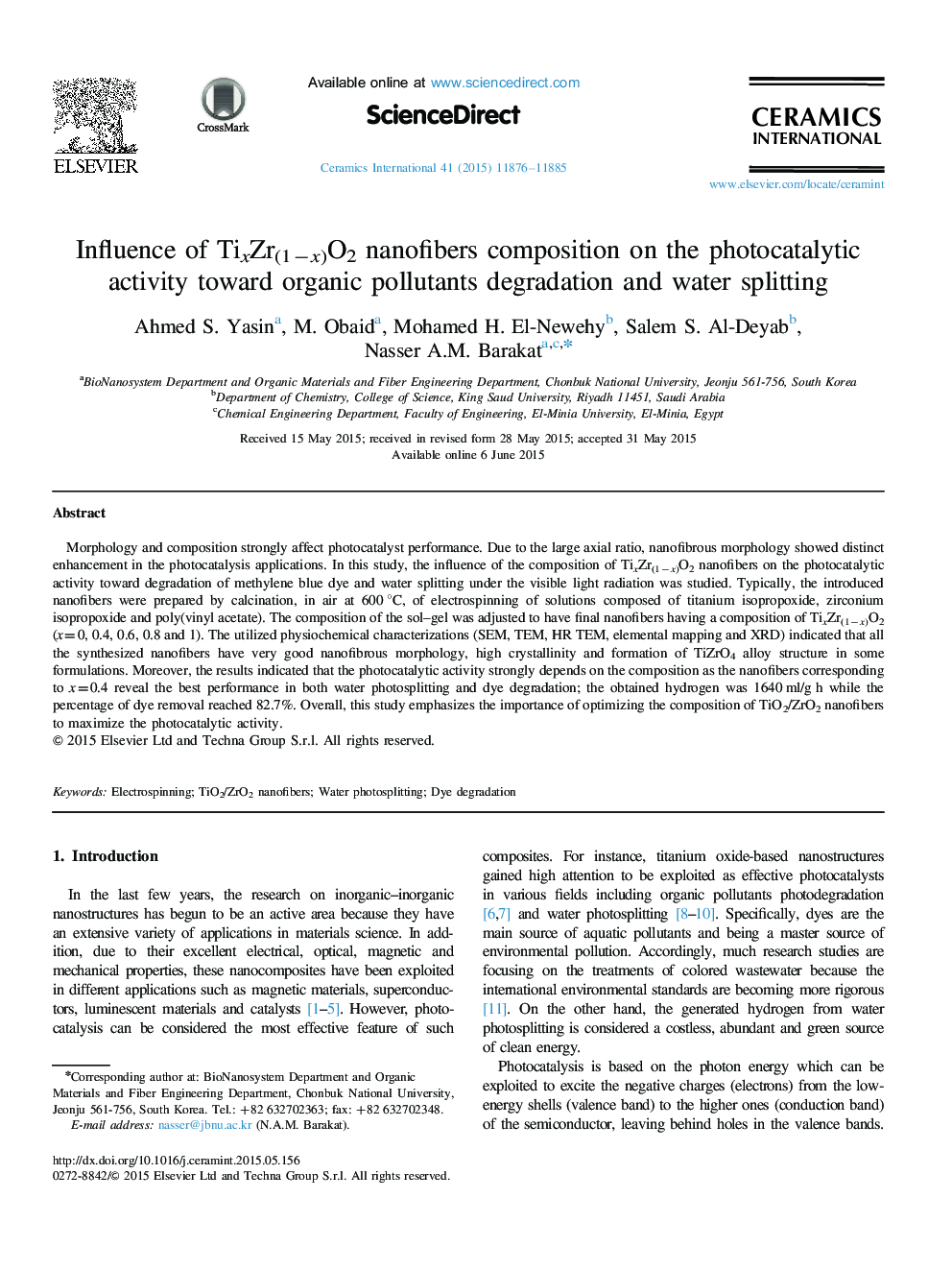| Article ID | Journal | Published Year | Pages | File Type |
|---|---|---|---|---|
| 1459923 | Ceramics International | 2015 | 10 Pages |
Morphology and composition strongly affect photocatalyst performance. Due to the large axial ratio, nanofibrous morphology showed distinct enhancement in the photocatalysis applications. In this study, the influence of the composition of TixZr(1−x)O2 nanofibers on the photocatalytic activity toward degradation of methylene blue dye and water splitting under the visible light radiation was studied. Typically, the introduced nanofibers were prepared by calcination, in air at 600 °C, of electrospinning of solutions composed of titanium isopropoxide, zirconium isopropoxide and poly(vinyl acetate). The composition of the sol–gel was adjusted to have final nanofibers having a composition of TixZr(1−x)O2 (x=0, 0.4, 0.6, 0.8 and 1). The utilized physiochemical characterizations (SEM, TEM, HR TEM, elemental mapping and XRD) indicated that all the synthesized nanofibers have very good nanofibrous morphology, high crystallinity and formation of TiZrO4 alloy structure in some formulations. Moreover, the results indicated that the photocatalytic activity strongly depends on the composition as the nanofibers corresponding to x=0.4 reveal the best performance in both water photosplitting and dye degradation; the obtained hydrogen was 1640 ml/g h while the percentage of dye removal reached 82.7%. Overall, this study emphasizes the importance of optimizing the composition of TiO2/ZrO2 nanofibers to maximize the photocatalytic activity.
